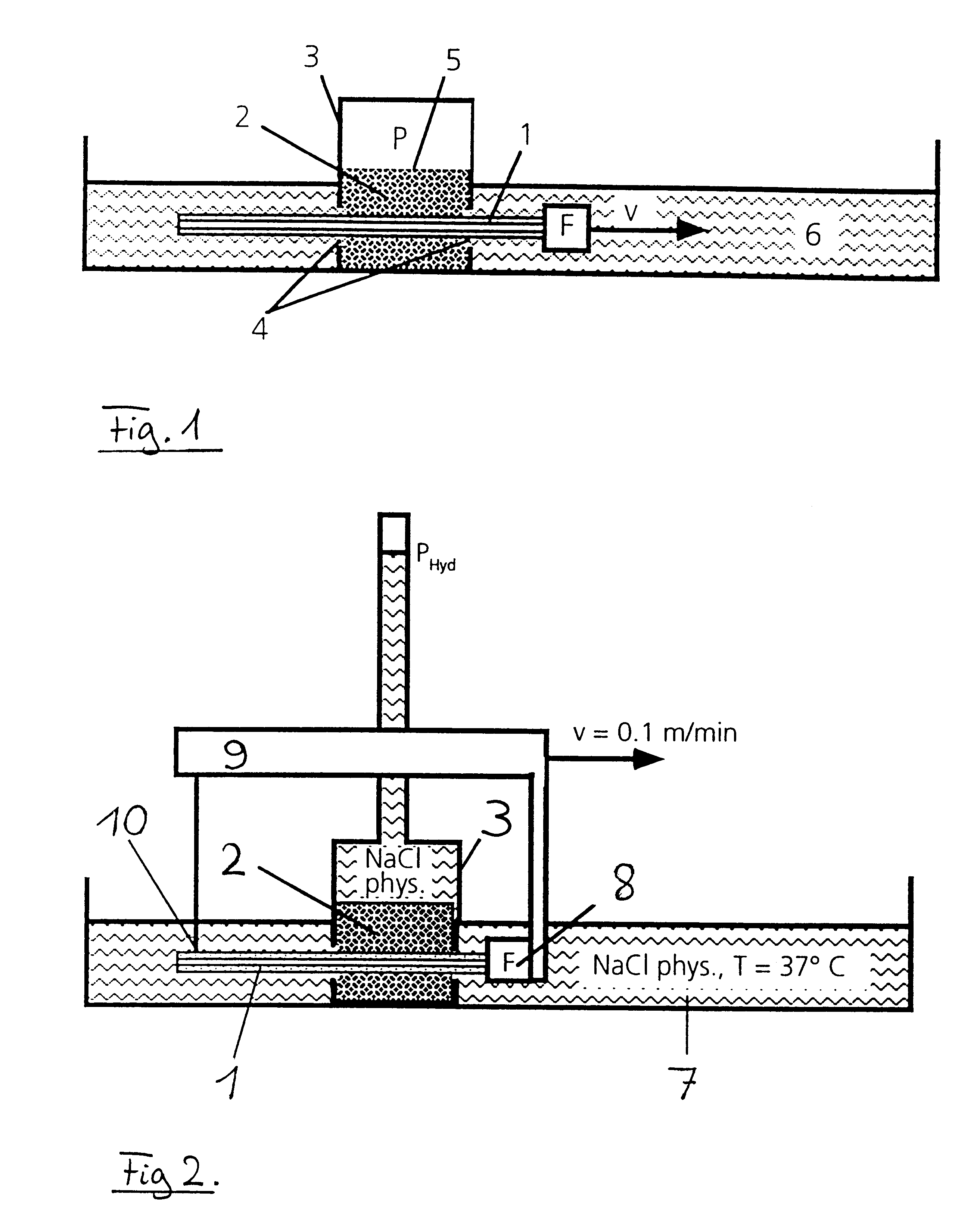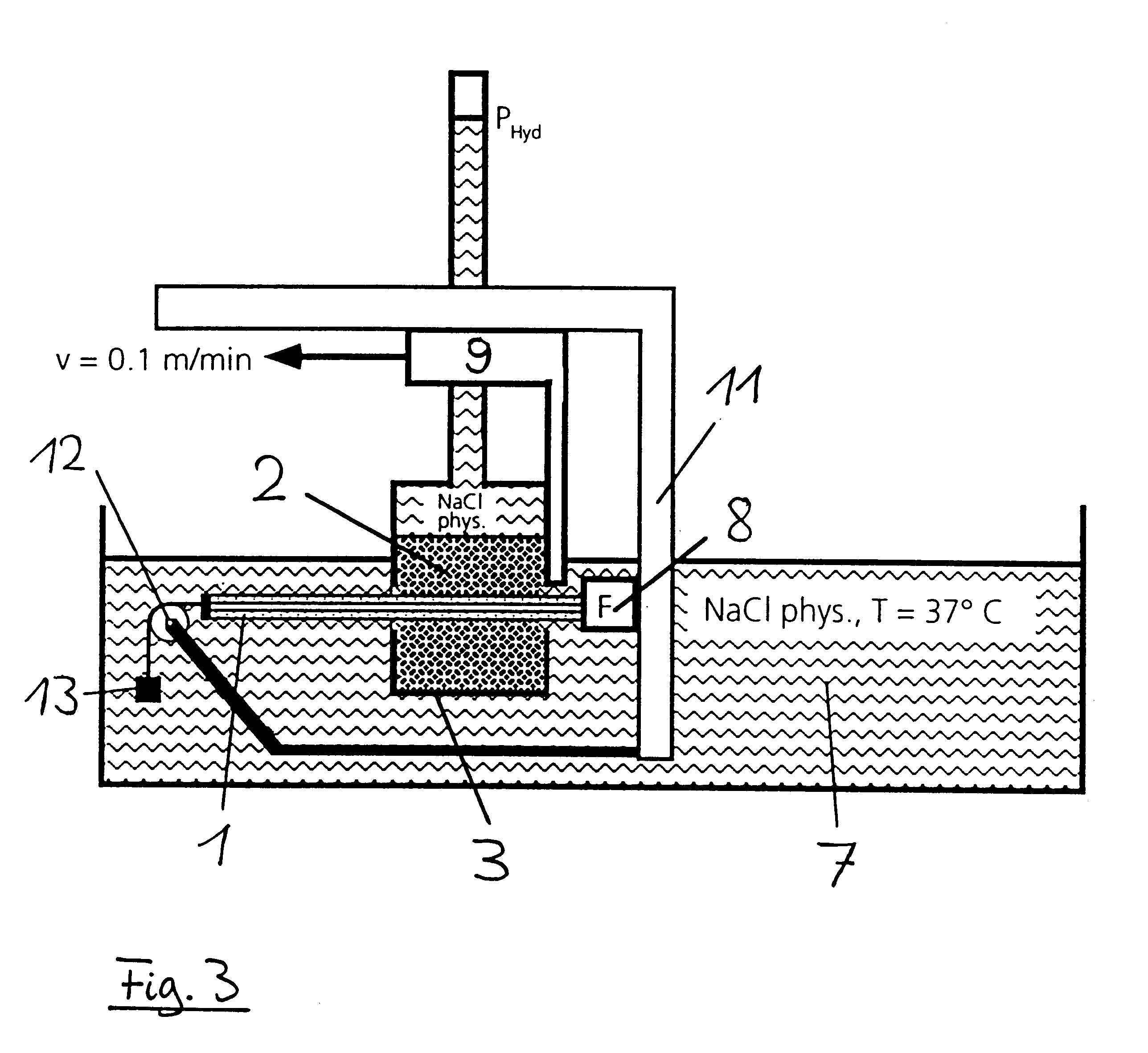Process and device for determining the surface friction coefficients of bodies
a surface friction coefficient and process technology, applied in the direction of measuring devices, instruments, scientific instruments, etc., can solve the problems of not being able to quantitatively evaluate a reduction in friction, cannot be compared with each other, and testing is very realisti
- Summary
- Abstract
- Description
- Claims
- Application Information
AI Technical Summary
Problems solved by technology
Method used
Image
Examples
Embodiment Construction
FIG. 1 shows again the invented principle of the present process using a preferred embodiment. A to-be-examined catheter (1) is pulled with a defined velocity v through a gel-like soft, viscoelastic substance (2), and the friction force F required therefor is measured. The substance (2) fills the interior of a rigid container (3) in such a manner that it snuggles against the walls and floor of the container. This substance has a cylindrical lumen running through its center. The diameter of this lumen largely corresponds to the diameter of the catheter. The walls of the container, too, are provided with boreholes (4), the diameter of which is a little larger than that of the catheter, at both ends at the points of entry of the catheter so that the catheter does not rub against the wall of the container when pulled through the substance. A defined surface pressure P is applied to the free surface (5) of the viscoelastic substance spreading, after a period of relaxation, in the entire ...
PUM
| Property | Measurement | Unit |
|---|---|---|
| temperature | aaaaa | aaaaa |
| height | aaaaa | aaaaa |
| hydrostatic pressure | aaaaa | aaaaa |
Abstract
Description
Claims
Application Information
 Login to View More
Login to View More - R&D
- Intellectual Property
- Life Sciences
- Materials
- Tech Scout
- Unparalleled Data Quality
- Higher Quality Content
- 60% Fewer Hallucinations
Browse by: Latest US Patents, China's latest patents, Technical Efficacy Thesaurus, Application Domain, Technology Topic, Popular Technical Reports.
© 2025 PatSnap. All rights reserved.Legal|Privacy policy|Modern Slavery Act Transparency Statement|Sitemap|About US| Contact US: help@patsnap.com



